- Focus on Islamic Microfinance and CSR could pull Pakistan out of poverty
In recent times, social and economic disparity has grown to unprecedented levels in Pakistan. On one hand, there is dangerously high food inflation and on the other hand there is rising unemployment. The term ‘middle class’ is fast eroding due to rise in poverty levels and fall in real incomes. While lower segments of society are trying to make ends meet, consumption of luxury items by elite class is on the rise which is creating a civil war like situation and the most worrying fact is that there seems to be no end to it in the near future.
The current poverty rate in the country stands at 40.5% with an additional 2.6 million Pakistanis falling below the poverty line. In the World Economic Forum’s gender report, the country ranked 142 out of 146 countries — ahead of just Iran, Algeria, Chad and Afghanistan. That is not all, the country has to endure multipronged challenges of climate change, gender and poverty — all inextricably linked with one another. A recent CCDR (Country Climate & Development Report) warned that the combined risks of extreme climate-related events, environmental degradation, and air pollution are projected to reduce Pakistan’s GDP by at least 18 to 20% by 2050. This will stall progress on economic development and poverty reduction. Islamic microfinance and Corporate Social Responsibility (CSR) are two areas which could be leveraged to pull Pakistan out of this quagmire.
Islamic Microfinance
Islamic microfinance has great potential to provide support to the poor by providing financial services at their doorstep. The asset based nature of Islamic modes of financing safeguard customers against mis-utilization of financing and thus over indebtedness. The regulatory environment for developing Islamic microfinance in Pakistan is quite conducive as detailed guidelines for Islamic Microfinance industry including detailed licensing criteria are already available. Going forward, support is being provided by SBP to the Islamic microfinance industry for capacity building, coordination and collaboration among various stakeholders, focused research and pilot projects to develop this sector.
Islamic microfinance offers an alternative paradigm for millions of poor people who are currently not served by conventional microfinance. In order to provide access to sustainable services on scale, it is imperative for the industry to adopt innovative and sound practices and prove that these models work. To this end, the industry requires deeper market research and a comprehensive initiative to build the capacity of players in the micro and macro levels, in order to help in developing and implementing appropriate business models.
Microfinance cannot be separated from Islamic finance if targeting the ultimate objective of social welfare enhancement by promoting inclusive growth and encouraging wealth distribution. Structures of Islamic microfinance have got inherent checks, and ability to deal with varying levels of poverty while providing foundations for the sustainability of institutions. However, the presence of Islamic microfinance is still very low and is concentrated only in few countries depicting a huge potential market for Islamic financial institutions as well as microfinance institutions to capture the faith sensitive microfinance clients. In order to make Microfinance Institutions (MFIs) more effective in the rural poverty reduction and to reach the target poor in the rural areas, the government should create more enabling environment by improving on the rural physical infrastructural facilities. Also, there has to be constant promotion of health and education facilities.
Pakistan’s healthcare system is marred by poor governance and underinvestment, which leads to poor health outcomes for the citizens. The country has one of the lowest government spending on healthcare in the world, with only 0.8% of GDP allocated to healthcare. Pakistan desperately needs to increase its healthcare budget to improve its health infrastructure and overcome its workforce shortage.
The government should prioritise constructing and upgrading healthcare facilities, particularly in rural areas. Healthcare disparities in Pakistan arise from various factors, including geographical location, socioeconomic status, gender, and cultural norms. Such services in Pakistan are disproportionately concentrated in urban areas, leaving rural and remote regions with limited access to quality medical facilities. Poverty and lack of education, along with other social determinants, are proven barriers to healthcare in Pakistan. People living in poverty usually haven’t been educated about their health. This lack of education often leads to low life expectancies and high mortality rates.
CSR
Since 2004 Pakistan is collectively facing natural disasters that raised the long lasting devastating impacts on the society as a whole. In Pakistan where majority of population is illiterate, deprived of basic human needs and live below the poverty line, CSR could be a possible leverage for poverty alleviation.
Due to insufficient public sector development programmes, corporate CSR activities could be of great help. Due to its striking significance around the globe, CSR today is considered to be more of social investment to help the under privileged marginalised communities and its impact is widely recognized in the sustainable development of the society. The Government of Pakistan has also encouraged the corporate sector both public and private to contribute to CSR activities for their due share in poverty eradication. CSR requires sincere efforts and meaningful cooperation among stakeholders in the society.
In Pakistan, role of state is not enough for solving the economic issues related to poverty alleviation thus the due weightage to social responsibility encompasses primarily social indicators like health, education, employment, income etc. by corporates could be an integral solution that augments the government role in reducing poverty.



